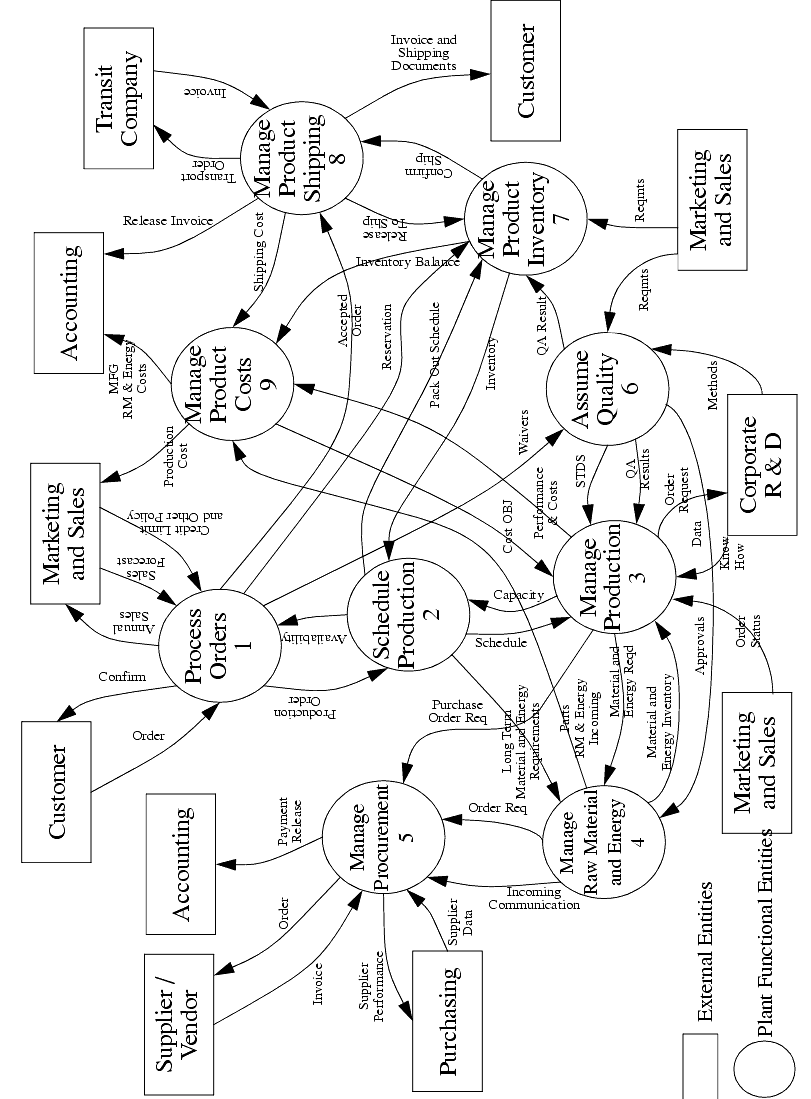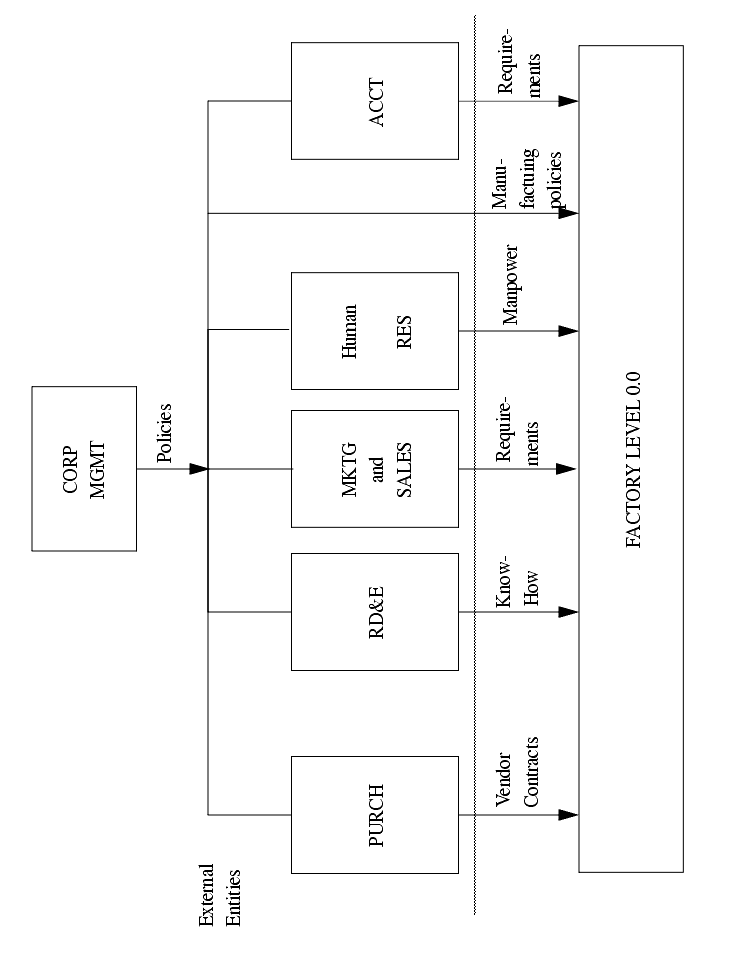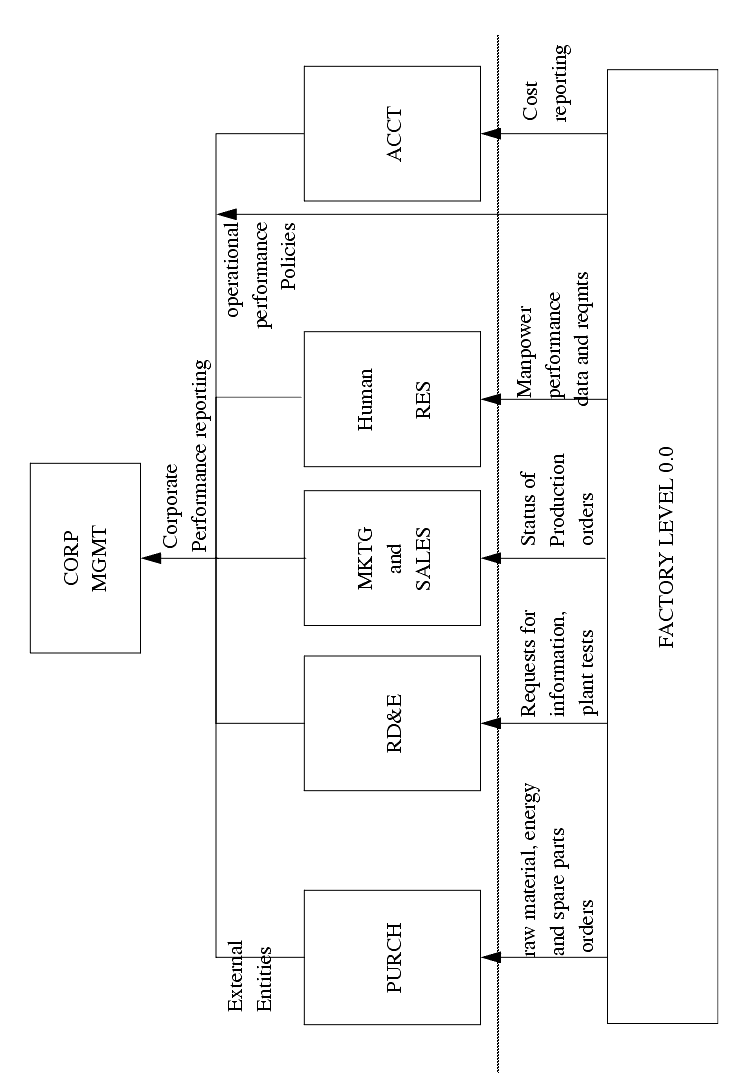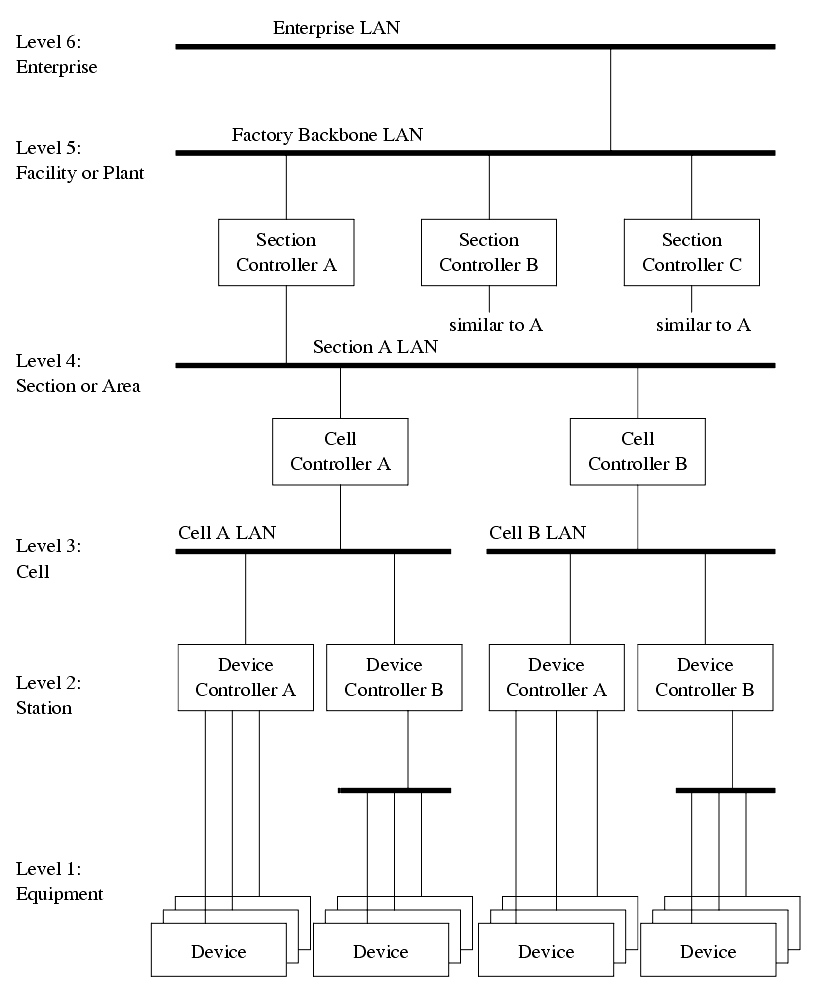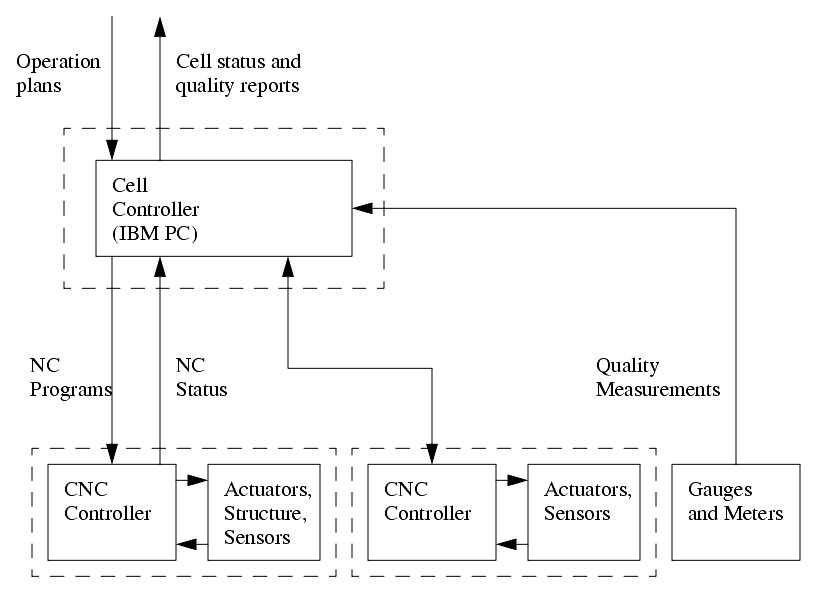AA:6.2 CORPORATE COMMUNICATIONS
������������
Previous paper based systems provided support for data transfer between departments, and provided a good basis for the introduction of computers
ASIDE: Computers can make a good system better, but they will always make a bad system worse. This is because a system which is not well defined and poorly understood cannot be programmed, or optimized.
Characteristics of paper based manufacturing systems,
- Multiple copies of same information.
- Revising information is hard when multiple copies exist.
- Delays for the transfer of paper.
- Paper is not interactive.
- Paper requires bulky storage.
Computers overcome and reduce the problems above, but introduce some technological challenges,
- Creating programs to support corporate functions.
- Software to support interdepartmental communication and data sharing.
- Hardware to support the software.
This figure below shows various departments, and the information flow
[source - ???
Requirements for interfacing corporate management and staff functional entities to the factory
[source - find]
Assumed functional hierarchy computer system structure for a large manufacturing complex
[source - find]
Report interfacing to corporate management and staff functional entities from the factory
[source - find]
The Shop Floor Production Model (SFPM):
|
Level
|
Sub-Activity
|
Responsibility
|
4
|
Section/Area
|
Supervise shop floor production process
|
Supervising and coordinating the production and supporting the jobs and obtaining and allocating resources to the jobs.
|
3
|
Cell
|
Coordinate shop
floor production process
|
Sequencing and supervising the jobs at the shop floor production process
|
2
|
Station
|
Command shop floor production process
|
Directing and coordinating the shop floor production process
|
1
|
Equipment
|
Execute shop floor production process
|
Executing the job of shop floor production according to commands
|
[ source - find]
The ISO Reference Model for Factory Automation adds a couple of layers
Level/Hierarchy
|
Area of Control
|
Responsibility
|
Basic Functions
|
6 /
Enterprise
|
Managing the corporation
|
Achieving the enterprise's mission and managing the corporation
|
Corporate management
Finance
Marketing and sales
Research and Development
|
5 /
Facility or plant
|
Planning Production
|
Implementing the enterprise functions and planning and scheduling production
|
Product design and production engineering
Production management (upper level)
Resource management (upper level)
Procurement (upper level)
Maintenance management (upper level)
|
4 /
Section or area
|
Allocating and supervising materials and resources
|
Coordinating production and obtaining and allocating resources to jobs
|
Production management (lower level)
Procurement (lower level)
Resource management (lower level)
Maintenance management (lower level)
Shipping
Waste material treatment
|
3 / Cell
|
Coordinating multiple machines and operations
|
Sequencing and supervising shop floor jobs and supervising various supporting services
|
Shop floor production (cell level)
|
2 / Station
|
commanding machine sequences and motion
|
Directing and coordinating the activity of the shop floor equipment
|
Shop floor production (station level)
|
1 / Equipment
|
Activating sequences and motion
|
Taking action on commands to the shop floor equipment
|
Shop floor production (equipment level)
|
[ source - find]
A LAN (Computer Network) Hierarchy for Shop Floor Control
[source - find]
Typical Architecture for Manufacturing Components
Item
|
Equipment
|
Workstation
|
Cell
|
EXAMPLES
Hardware
|
Lathe, Mill, T-10 Bridgeport Series I IBM 7545 Robot
|
Robot tended Machine Center, Cartrac Material Handling System
|
Variable Mission System, Several Integrated workstations
|
Controller Hardware
|
Mark Century 2000, Accuramatic 9000, Custom-single-board system.
|
Allen-Bradley PLC-5, IBM-PC, etc.
|
Windows NT, SUN workstation, etc.
|
Type Controller
|
Single-board processors, Machine tool controller, Servo-Controller, etc
|
PLC, PC, Minicomputer
|
PC, Microcomputer, Super-MiniComputer
|
Language Application
|
Assembler, Part programming, Robot programming, etc.
|
C, Ladder logic, Pascal and other sequential languages
|
C, LISP, FORTRAN, and other high level languages
|
Memory/Size Requirements
|
8k-128k RAM plus custom ROM, EPROM, etc.
|
32M RAM, >1M Hard Drive
|
128M RAM, >1Gigabyte Hard drive
|
Response Time
|
< 10-3 sec
|
< 1 sec
|
< 20 sec
|
Machines/ Interconnects
|
1-1 connect
|
1-many
1-[1,8] Machine tools,
1-[1-50] Material handling
|
1-many
1-[1-15] workstations
|
[ update]
Functional Breakdown of Control Architecture
|
Equipment
|
Workstation
|
Cell
|
Planning
|
Tool selection, parameter specification, tool path refinement, GMT code, tool assignment to slots, job setup planning
|
Resource allocation jobs
Batch splitting and equipment load balancing
|
Batching, Workload balancing between workstations, Requirements planning
Task allocation to workstations
|
Planning Horizon
|
Milliseconds - Minutes
|
Minutes - Hours/Days
|
Hours - Days/weeks
|
Scheduling
|
Operation sequencing at individual equipment
|
Sequence equipment level subsystems
Deadlock detection and avoidance
Gantt chart or E.S. based scheduling
Buffer management
|
Assignment of due dates to individual workstations
Look ahead ES/simulation based scheduling
Optimization based tech
Batch sequencing
|
Control
|
Interface to workstation controller
Physical control (motion control at NC and robot pick and place level)
Execution of control programs (APT, AML, etc.)
|
Monitor equipment states and execute part and information flow actions based on states
Synchronize actions between equipment (eg. robot & machine while loading/unloading parts)
Ladder logic execution
|
Organizational control of workstations, Interface with MPS, generation of reports, etc.
|
In all of these models we must consider the value of the information being passed. At the low level control stages, information that is more than a few seconds old may be completely worthless, while the same information at the higher level may be valuable for quality tracking months later.
We can draw part of a simple flow chart that illustrates a simple CIM system. The elements shown include a PLC, NC machine, and stand alone sensors. These are all integrated by a single computer running cell control software.

